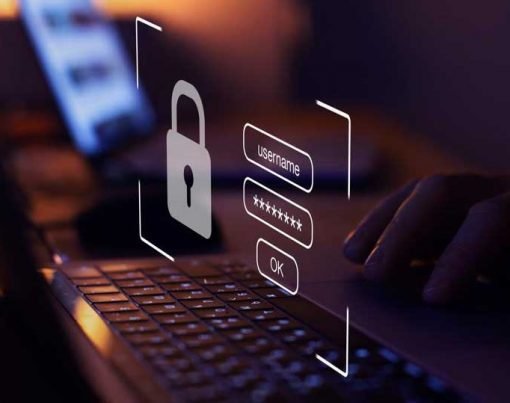Table of Contents
Definition of Digital Forensics
Digital forensics, also known as computer forensics, is the application of scientific investigation techniques to digital evidence found in computers and other electronic devices. It is used to uncover criminal activity or misconduct within an organization or individual’s computer network. Digital forensic investigators use specialized software and hardware tools to extract data from electronics that might be used in a court of law.
The goal of digital forensics is to collect, analyze, and present digital evidence that can be used in court proceedings. This could include evidence such as deleted files, emails, internet browsing history, etc. To do this effectively requires the investigator to have an understanding of the operating system and file systems on the device being examined so they can properly access any possible evidence that may be hidden away within it.
In addition to these more technical aspects of digital forensics there are other components such as writing reports detailing their findings as well as testifying in court if requested by either side involved in a case. Because many cases require legal involvement it’s important for digital forensic investigators to have a good working knowledge of the law pertaining to their work so they can provide accurate information when needed during investigations or courtroom proceedings. Click here to see digital forensics information.
Types of Digital Forensics
Digital forensics is a rapidly growing field that is used to investigate and analyze digital evidence from computers, networks, cell phones, and other electronic devices. This type of forensic science can provide invaluable intelligence in criminal investigations, civil lawsuits, cyber security incidents, and other types of digital crime. There are several different types of digital forensics that can be used to uncover evidence in a variety of cases.
The first type is file system forensics which examines the structure and contents of a computer’s file system to uncover hidden or deleted data. This type of analysis can be used to identify malicious software or recover lost data from damaged hard drives. File system forensics also looks at the metadata associated with files such as timestamps and ownership information which can be useful when trying to determine who accessed certain files or when they were last modified.
Another type of digital forensics is network forensics which focuses on analyzing data packets traveling over a computer network such as email messages or web traffic. Network forensic analysts look for patterns in this data that could indicate malicious activity such as botnets or distributed denial-of-service attacks (DDoS). They also examine the headers associated with an email message to determine its originator as well as any suspicious attachments it may contain.
Processes Involved in Digital Forensics
Digital forensics is the process of recovering and investigating digital data in order to uncover evidence for legal proceedings. It involves a wide range of techniques, tools, and procedures that focus on identifying, preserving, analyzing, and presenting digital evidence. The goal of digital forensics is to uncover information from various forms of media such as hard drives, computers, cell phones, tablets and other electronic devices.
The first step in any digital forensics investigation is the identification and collection of evidence. This includes searching through computer systems or networks for relevant information such as documents or emails. Once the relevant data has been identified it must be preserved in its original state so that it can be examined without altering it in any way. This preservation process can involve creating an exact copy or image file of the system or device being investigated so that it can be analyzed without affecting the original source material.
Once the evidence has been collected and preserved it must then be analyzed using specialized software tools to extract information from the data sources. These tools allow investigators to search for specific keywords within documents or files as well as identify patterns within large sets of data such as IP addresses used by a hacker during an attack. During this analysis phase investigators may also use methods such as hashing algorithms which fingerprints each piece collected.
Benefits of Digital Forensics
Digital forensics is a growing field that is becoming increasingly important in today’s digital world. Digital forensics involves the recovery and analysis of data stored on computers, mobile devices, and other digital media. It can be used to investigate cybercrime, identity theft, intellectual property violations, hacking incidents, and more.
The use of digital forensics has many benefits that make it an invaluable tool for law enforcement agencies. First of all, it allows investigators to quickly identify the type of activity that took place on a device or computer system. This helps them determine how to proceed with an investigation and what evidence should be collected from the scene. Additionally, digital forensics can help law enforcement officers reconstruct events leading up to an incident or create a timeline for when certain activities occurred so they can better understand how the crime was committed.
Another benefit of using digital forensics is that it allows investigators to preserve evidence without having to physically collect it from the scene. By capturing images of hard drives or other media storage devices at a crime scene using specialized software tools such as FTK Imager or EnCase Forensic Suite, they are able to capture forensic images which contain all data present on the device at time of capture which could later be analyzed in court if necessary.
Challenges Faced in Digital Forensics
Digital forensics is a relatively new field of research that has become increasingly important as technology continues to evolve. As businesses and individuals rely more heavily on digital devices for communication, storage, and entertainment, the need for digital forensics experts to investigate cyber crimes and other malicious activities has grown significantly. Unfortunately, this rising demand has exposed a number of challenges that must be addressed in order for successful digital forensic investigations to be conducted.
One major challenge encountered by digital forensic investigators is the sheer amount of data they must sift through during an investigation. Digital devices are capable of storing vast amounts of data which can become complicated when trying to isolate evidence relevant to a case. This process requires extensive knowledge in computer systems and technologies as well as an understanding of how criminals use these systems against victims. Furthermore, it can take days or even weeks to properly analyze all the data collected from a device which drastically increases costs associated with investigations.
Another key challenge associated with digital forensics is keeping up with constantly changing hardware and software technologies used by criminals. As new tools are developed to commit cyber crimes or hide evidence from investigators, forensic examiners must develop strategies for dealing with them quickly in order to remain effective at their job.
Conclusion
Digital forensics has proven to be a valuable asset in law enforcement and legal proceedings, providing invaluable evidence and assisting in the investigation of cybercrime. With the increased use of digital devices, it is becoming more important that organizations have access to effective digital forensic capabilities. By leveraging advanced technologies such as AI and machine learning, digital forensics can be used to quickly process large amounts of data and uncover potential threats. Digital forensics will continue to play an important role in combating cybercrime for years to come.










